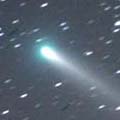
|
It reached to 6 mag at best in early May at the remarkable approach to the earth, when it became double naked eye comets with the component B around the zenith. Now it is going away from the earth and fading. It has already faded down to 10.5 mag (July 7, Juan Jose Gonzalez). The apparent distance between the two components is reduced and two bright comets are now in the same field of a photo. It is getting higher again in the morning sky also in the Northern Hemisphere.
Date(TT) R.A. (2000) Decl. Delta r Elong. m1 Best Time(A, h)
July 15 2 17.03 -11 52.4 0.486 1.089 85 9.9 3:14 (303, 21)
July 22 2 22.44 -12 6.4 0.518 1.141 90 10.1 3:20 (309, 26)
|
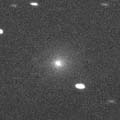
|
The condition is worst in this time, not visible in the Northern Hemisphere at all. It was observed in the Southern Hemisphere as 11.4 mag on June 6, as bright as expected (Michael Mattiazzo). However, in this appearance, the comet will never be observable again.
Date(TT) R.A. (2000) Decl. Delta r Elong. m1 Best Time(A, h)
July 15 7 20.34 22 31.6 1.630 0.619 3 10.0 3:14 (228,-15)
July 22 8 3.32 21 16.5 1.718 0.702 0 10.6 3:20 (227,-17)
|
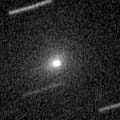
|
It brightened much more rapidly than expected after late April, and reached to 9.5 mag on June 15 (Willian Souza). Now it is 10.3 mag (Juny 28, Juan Jose Gonzalez). It is fading now, but it keeps observable in the evening until autumn when it becomes too faint to see. It keeps locating around 30 degree high. Great outburst over 6 mag has occured always in recent appearances in 1995 and 2001. So it may brighten much more after this.
Date(TT) R.A. (2000) Decl. Delta r Elong. m1 Best Time(A, h)
July 15 12 26.16 9 0.4 0.957 1.140 70 10.1 20:57 ( 80, 29)
July 22 12 58.01 5 26.6 0.976 1.179 72 10.4 20:51 ( 75, 29)
|
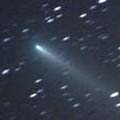
|
It reached to 5 mag at best in early May at the remarkable approach to the earth, when it became double naked eye comets with the component C around the zenith. Now it is going away from the earth and fading. It had faded down to 8.5 mag on June 10 (Willian Souza). No observations were reported recently, but it will be fainter than 11 mag now. The apparent distance between the two components is reduced and two bright comets are now in the same field of a photo. It is getting higher again in the morning sky also in the Northern Hemisphere. Since mid May, no nuclear split or outburst has occured at all.
Date(TT) R.A. (2000) Decl. Delta r Elong. m1 Best Time(A, h)
July 15 2 18.05 -12 32.6 0.467 1.082 85 11.1 3:14 (303, 21)
July 22 2 22.97 -12 48.4 0.499 1.134 90 11.6 3:20 (309, 25)
|

|
New comet discovered on the SWAN images. Now it is only observable in the Southern Hemisphere. Even in the Southern Hemisphere, it will be unobservable soon. In the Northern Hemisphere, it will appear at 7.5 mag in the extremely low sky at dawn in late September. It will turn to locate in the evening sky after early October. Then it keeps observable in the evening sky until early January while fading gradually. In the Southern Hemisphere, it cannot be observable until next April when it becomes fainter than 15 mag.
Date(TT) R.A. (2000) Decl. Delta r Elong. m1 Best Time(A, h)
July 15 9 9.13 -0 59.6 2.332 1.566 31 11.8 20:57 (101,-17)
July 22 9 17.80 1 26.6 2.314 1.470 26 11.5 20:51 (105,-18)
|
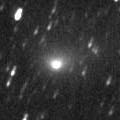
|
Now it is brightest and reached to 11.0 mag (June 15, Willian Souza). It keeps 11-12 mag until July. The condition is best beucase it is almost at opposition at the perihelion passage. However, it keeps very low, only about 15 degree high until September in the Northern Hemisphere. When it gets higher again, it will be fainter than 14 mag, too faint to see visually.
Date(TT) R.A. (2000) Decl. Delta r Elong. m1 Best Time(A, h)
July 15 19 38.28 -41 42.2 0.612 1.605 159 12.2 0:09 ( 0, 13)
July 22 19 37.22 -42 14.2 0.636 1.622 157 12.3 23:36 ( 0, 13)
|
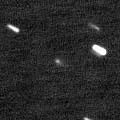
|
It was 15.0 mag on June 13 (Giovanni Sostero and Ernesto Guido), brightening as expected. It will become visible visually soon. It will be brightening rapidly after this, and will reach to 8.5 mag from autumn to winter, and observable in its best condition. It keeps 14 mag still in 2007 April, so it keeps visible visually for a long time.
Date(TT) R.A. (2000) Decl. Delta r Elong. m1 Best Time(A, h)
July 15 0 36.90 11 16.6 1.625 2.051 99 12.7 3:14 (306, 55)
July 22 0 47.56 12 14.3 1.524 2.015 103 12.3 3:20 (313, 60)
|
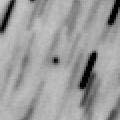
|
Recovered after 117 year blank since 1889. It is already visible visually at 13.2 mag (July 7, Juan Jose Gonzalez). This time it will be closer to the earth than at the discovery. It moves northwards rapidly and keeps observable in good condition at 12-13 mag until September in the Northern Hemisphere. Based on the brightness in 1889, it can be much britghter than this ephemeris. However, because it is very close to the earth, it will look very diffuse.
Date(TT) R.A. (2000) Decl. Delta r Elong. m1 Best Time(A, h)
July 15 17 10.18 2 25.1 0.370 1.311 136 13.3 21:36 ( 0, 58)
July 22 17 1.84 13 55.0 0.367 1.257 123 12.8 21:01 ( 0, 70)
|
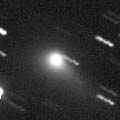
|
It had been observed at 10 mag in the evening sky from winter to spring. But now it is not observable. It will appear in the morning sky again in late August at 13.5 mag. It will come to locate high in October, then it will be visible visually again at 14 mag.
Date(TT) R.A. (2000) Decl. Delta r Elong. m1 Best Time(A, h)
July 15 7 17.48 33 11.3 3.399 2.416 12 12.9 3:14 (221, -6)
July 22 7 33.06 32 38.0 3.456 2.483 14 13.0 3:20 (225, -4)
|
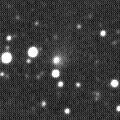
|
New comet just discovered on June 14. It is bright as 13.4 mag and visible visually (June 16, Willian Souza). In the Northern Hemisphere, it locates rather low in the evening. In the Southern Hemisphere, it locates high. It will be observable at 13 mag for a long time after this.
Date(TT) R.A. (2000) Decl. Delta r Elong. m1 Best Time(A, h)
July 15 14 9.62 -20 43.9 2.052 2.512 104 13.1 20:57 ( 37, 25)
July 22 14 7.81 -17 28.1 2.129 2.464 96 13.1 20:51 ( 44, 25)
|

|
Appearing at dawn. It is already in outburst and visible bright as 12.9 mag now (July 9, Esteban Reina Lorenz). It will be observable in good condition in autumn and winter.
Date(TT) R.A. (2000) Decl. Delta r Elong. m1 Best Time(A, h)
July 15 3 56.12 28 52.8 6.425 5.823 49 13.8 3:14 (251, 25)
July 22 4 0.93 29 11.9 6.341 5.825 55 13.8 3:20 (254, 31)
|

|
It was observed as 12 mag in spring. It was diffuse visually, but bright and enjoyable with a large telescope. It was still bright as 12.8 mag on June 25 (Carlos Labordena). However, it is fading rapidly now. It keeps observable in good condition until autumn, but it will be too faint to see visually soon.
Date(TT) R.A. (2000) Decl. Delta r Elong. m1 Best Time(A, h)
July 15 15 44.20 31 27.0 2.156 2.584 103 13.8 20:57 ( 73, 80)
July 22 15 34.80 31 1.6 2.320 2.650 97 14.0 20:51 ( 81, 73)
|
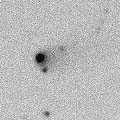
|
It has been visible at 13.5 mag since last October. Small and strongly condensed. It kept observable in good condition for a long time, but it will be getting lower in the evening, and will be too low to observe soon. However, it will be observable in good condition again at 14.5 mag in next winter.
Date(TT) R.A. (2000) Decl. Delta r Elong. m1 Best Time(A, h)
July 15 10 40.81 37 8.7 5.943 5.241 42 14.2 20:57 (121, 22)
July 22 10 47.70 36 8.6 6.000 5.248 38 14.2 20:51 (121, 19)
|

|
Although it was not observed in its last return in 1999, it is observable in good condition after the periheliion passage in this return. Now it is brightest. But actually, it was 18.6 mag, much fainter than this ephemeris by 4-5 mag (June 30, Filip Fratev). In this appearance, it will never be brighter than 18 mag and it will fade out after this.
Date(TT) R.A. (2000) Decl. Delta r Elong. m1 Best Time(A, h)
July 15 2 16.73 28 33.3 2.076 1.999 71 14.6 3:14 (263, 45)
July 22 2 28.69 31 5.8 2.022 2.009 74 14.6 3:20 (262, 50)
|

|
It is not observable around the perihelion passage in early August. But it will be observable in good condition as 15-16 mag from September to November.
Date(TT) R.A. (2000) Decl. Delta r Elong. m1 Best Time(A, h)
July 15 6 58.21 21 45.8 1.717 0.730 8 15.5 3:14 (232,-12)
July 22 7 32.92 19 41.5 1.567 0.575 7 14.8 3:20 (234,-13)
|
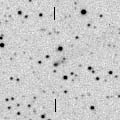
|
In 2005 spring, it reached to 14 mag and became visible visually as 13.8 mag (July 8, Reinder J. Bouma). In 2006, it will be the same condition and brightness in summer again. Somewhat low in the south. But it will reach to 14 mag.
Date(TT) R.A. (2000) Decl. Delta r Elong. m1 Best Time(A, h)
July 15 22 49.42 -20 1.6 2.401 3.202 135 15.0 3:14 (358, 35)
July 22 22 47.92 -20 30.6 2.352 3.213 141 15.0 2:50 ( 0, 35)
|

|
It has been lost since its discovery in 1986. The condition is good in this return. In calculation, it will be 14 mag from autumn to winter. However, it was probably in outburst and brightened unexpectedly at the discovery. So it can be much fainer than this ephemeris actually. In the Northern Hemisphere, it keeps observable until it fades out in next spring.
Date(TT) R.A. (2000) Decl. Delta r Elong. m1 Best Time(A, h)
July 15 17 36.43 -23 22.5 1.022 1.979 152 15.5 22:03 ( 0, 32)
July 22 17 30.43 -23 10.3 1.015 1.932 144 15.3 21:29 ( 0, 32)
|

|
It was in major outburst unexpectedly and reached to 10.5 mag in its last appearance in 1999. It was already recovered in 2005 October. But it has not been observed for about 1 year since that. So the current brightness is quite uncertain. It will appear in the morning sky at 15.5 mag in September, then it will fade out gradually. But actually, it can be much fainter than this ephemeris.
Date(TT) R.A. (2000) Decl. Delta r Elong. m1 Best Time(A, h)
July 15 7 7.47 28 2.7 2.778 1.782 9 15.5 3:14 (226, -9)
July 22 7 28.48 27 11.1 2.760 1.772 10 15.4 3:20 (229, -7)
|
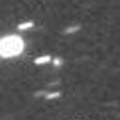
|
It is outside of Jupiter's orbit, so it keeps observable for a long time. In 2006, it is still faint and locating somewhat low. But in 2007 and 2008, it is expected to be bright as 14.5-15 mag. It will locate high at that time, so it may be visible visually.
Date(TT) R.A. (2000) Decl. Delta r Elong. m1 Best Time(A, h)
July 15 19 32.96 -24 18.1 5.818 6.834 177 15.8 0:04 ( 0, 31)
July 22 19 25.73 -24 10.1 5.803 6.806 170 15.7 23:24 ( 0, 31)
|

|
Peculiar asteroid moving along a comet-like orbit. It will reach to 14 mag in next January. It keeps observable in good condition after this while getting brighter rapidly. It may turn to be a comet after this.
Date(TT) R.A. (2000) Decl. Delta r Elong. m1 Best Time(A, h)
July 15 22 50.33 8 53.0 1.802 2.510 123 16.2 3:14 (356, 64)
July 22 22 48.40 10 52.2 1.673 2.443 129 15.9 2:51 ( 0, 66)
|
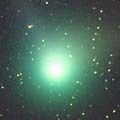
|
It was fantastic, so bright as 3.5 mag, so large as 30 arcmin, locating high overhead at its best time in early 2004 January. Then it has been getting fainter gradually, and become already too faint to see visually. However, it is still bright as 15.8 mag by CCD observations (Mar. 30, Katsumi Yoshimoto). It keeps observable until October when it becomes fainter than 18 mag.
Date(TT) R.A. (2000) Decl. Delta r Elong. m1 Best Time(A, h)
July 15 16 6.81 1 20.7 5.649 6.274 123 16.7 20:57 ( 10, 56)
July 22 16 5.13 0 53.1 5.797 6.335 117 16.8 20:51 ( 20, 54)
|

|
It was unexpectedly bright as 15.5 mag on Apr. 2 (Ken-ichi Kadota). Although it had been very low until June, now it is getting higher. It is already fading now. However, I has ever become a naked eye object in outburst, so observations are encouraged.
Date(TT) R.A. (2000) Decl. Delta r Elong. m1 Best Time(A, h)
July 15 0 29.63 -7 14.1 1.529 2.083 108 16.8 3:14 (324, 41)
July 22 0 34.08 -7 42.7 1.496 2.121 113 16.9 3:20 (334, 44)
|
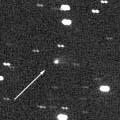
|
It was 16.0 mag on Mar. 13 (Ken-ichi Kadota). It kept 16-16.5 mag for about one year from early 2005. It keeps 17 mag until autumn.
Date(TT) R.A. (2000) Decl. Delta r Elong. m1 Best Time(A, h)
July 15 1 7.93 54 30.7 3.571 3.477 76 16.9 3:14 (221, 58)
July 22 1 7.66 54 25.3 3.508 3.503 81 16.9 3:20 (216, 63)
|
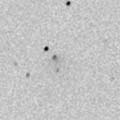
|
It is outside of Jupiter's orbit. So it keeps 17 mag for a long time until 2007 summer. Because it moves in the northern sky, it keeps locating high and observable in good condition, except for 2006 autumn when it becomes low temporarily.
Date(TT) R.A. (2000) Decl. Delta r Elong. m1 Best Time(A, h)
July 15 13 16.74 56 27.5 7.164 6.874 69 16.9 20:57 (139, 51)
July 22 13 18.01 55 5.9 7.217 6.881 66 16.9 20:51 (136, 49)
|

|
It is getting higher in the morning sky. It keeps observable at 17 mag in good condition after this until October.
Date(TT) R.A. (2000) Decl. Delta r Elong. m1 Best Time(A, h)
July 15 23 55.95 -9 1.2 1.855 2.482 116 17.0 3:14 (335, 43)
July 22 23 58.05 -8 26.3 1.801 2.498 122 17.0 3:20 (346, 46)
|

|
It was observed at 17 mag in 2005 summer. It will reach to 17 mag again in 2006 summer.
Date(TT) R.A. (2000) Decl. Delta r Elong. m1 Best Time(A, h)
July 15 22 55.71 -8 43.1 2.527 3.279 130 17.2 3:14 (356, 46)
July 22 22 54.81 -9 6.0 2.466 3.287 137 17.1 2:57 ( 0, 46)
|
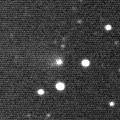
|
It was bright as 15 mag in 2004 and 2005. Now it is far away from the sun, but it still observable at 17 mag in 2006.
Date(TT) R.A. (2000) Decl. Delta r Elong. m1 Best Time(A, h)
July 15 1 11.41 -11 5.2 3.602 3.906 99 17.2 3:14 (316, 32)
July 22 1 13.60 -11 19.9 3.524 3.923 105 17.2 3:20 (324, 36)
|

|
It is outside of Jupiter's orbit. So it keeps 16.5-17.5 mag for a long time until 2008. In 2006, it keeps observable in good condition until November.
Date(TT) R.A. (2000) Decl. Delta r Elong. m1 Best Time(A, h)
July 15 21 48.97 -16 22.0 5.515 6.402 148 17.3 2:19 ( 0, 39)
July 22 21 43.03 -16 13.1 5.439 6.382 156 17.2 1:46 ( 0, 39)
|

|
It will be observable at 17 mag in good condition in September and October. Then it will fade out rapidly, and will be fainter than 18 mag in December.
Date(TT) R.A. (2000) Decl. Delta r Elong. m1 Best Time(A, h)
July 15 2 27.87 18 43.8 2.504 2.388 71 17.3 3:14 (273, 38)
July 22 2 37.67 18 53.9 2.446 2.412 76 17.3 3:20 (277, 43)
|

|
It keeps 17 mag for a long time after this until the end of 2007. It will be observable in good condition in 2006 autumn and 2007 autumn.
Date(TT) R.A. (2000) Decl. Delta r Elong. m1 Best Time(A, h)
July 15 19 47.64 47 46.7 3.566 4.037 110 17.3 0:18 (180, 77)
July 22 19 43.14 48 18.6 3.528 4.008 111 17.3 23:42 (180, 77)
|
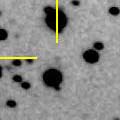
|
It will reach to 14.5 mag in 2007 summer, but it will be observable only in the Southern Hemisphere at that time. In the Northern Hemisphere, it keeps observable at 17.5 mag in good condition until autumn.
Date(TT) R.A. (2000) Decl. Delta r Elong. m1 Best Time(A, h)
July 15 20 21.55 12 26.5 4.691 5.548 144 17.8 0:52 ( 0, 67)
July 22 20 15.35 11 38.6 4.613 5.501 147 17.7 0:18 ( 0, 67)
|
|
![]()
 71P/Clark
71P/Clark 4P/Faye
4P/Faye 177P/2006 M3 ( Barnard 2 )
177P/2006 M3 ( Barnard 2 ) C/2005 E2 ( McNaught )
C/2005 E2 ( McNaught ) C/2006 L2 ( McNaught )
C/2006 L2 ( McNaught ) 29P/Schwassmann-Wachmann 1
29P/Schwassmann-Wachmann 1 C/2004 B1 ( LINEAR )
C/2004 B1 ( LINEAR ) C/2003 WT42 ( LINEAR )
C/2003 WT42 ( LINEAR ) 102P/Shoemaker 1
102P/Shoemaker 1 (3200) Phaethon
(3200) Phaethon 117P/Helin-Roman-Alu 1
117P/Helin-Roman-Alu 1 D/1986 W1 ( Lovas 2 )
D/1986 W1 ( Lovas 2 ) 52P/Harrington-Abell
52P/Harrington-Abell C/2005 L3 ( McNaught )
C/2005 L3 ( McNaught ) 2006 HR30
2006 HR30 C/2004 Q2 ( Machholz )
C/2004 Q2 ( Machholz ) 98P/Takamizawa
98P/Takamizawa C/2005 B1 ( Christensen )
C/2005 B1 ( Christensen ) C/2002 VQ94 ( LINEAR )
C/2002 VQ94 ( LINEAR ) P/2006 H1 ( McNaught )
P/2006 H1 ( McNaught ) P/2005 L1 ( McNaught )
P/2005 L1 ( McNaught ) P/2004 F3 ( NEAT )
P/2004 F3 ( NEAT ) C/2005 S4 ( McNaught )
C/2005 S4 ( McNaught ) P/2005 JY126 ( Catalina )
P/2005 JY126 ( Catalina ) C/2006 M1 ( LINEAR )
C/2006 M1 ( LINEAR ) C/2006 K4 ( NEAT )
C/2006 K4 ( NEAT )![]()


















